EDITOR’S NOTE: This article was written by Traveleater Sep Simborio and verified by Paul Palop, the Venezuelan food blogger and photographer behind that Other Cooking Blog. Follow him on Instagram for authentic Venezuelan recipes.
South America is a perennial hotspot for travelers looking to immerse themselves in a country for its rich history, culture, and – more importantly – food. With hundreds of years of colonization by the French, Portuguese, and Spaniards, the people have picked up a thing or two in shaping the culinary identity they have today.
One such country that’s not only known for its beauty queens and vast oil reserves is Venezuela. The country has carved itself as a Latin American food destination with its unique culinary tradition perfect for any food-obsessed traveler.
Considering the current situation, travel to Venezuela may not be advisable right now but Traveleaters interested in Venezuelan food will have these fifteen mouthwatering dishes to look forward to. Chevere!
Save This on Pinterest!
No time to read this Venezuelan food guide now? Click on the save button and pin it for later!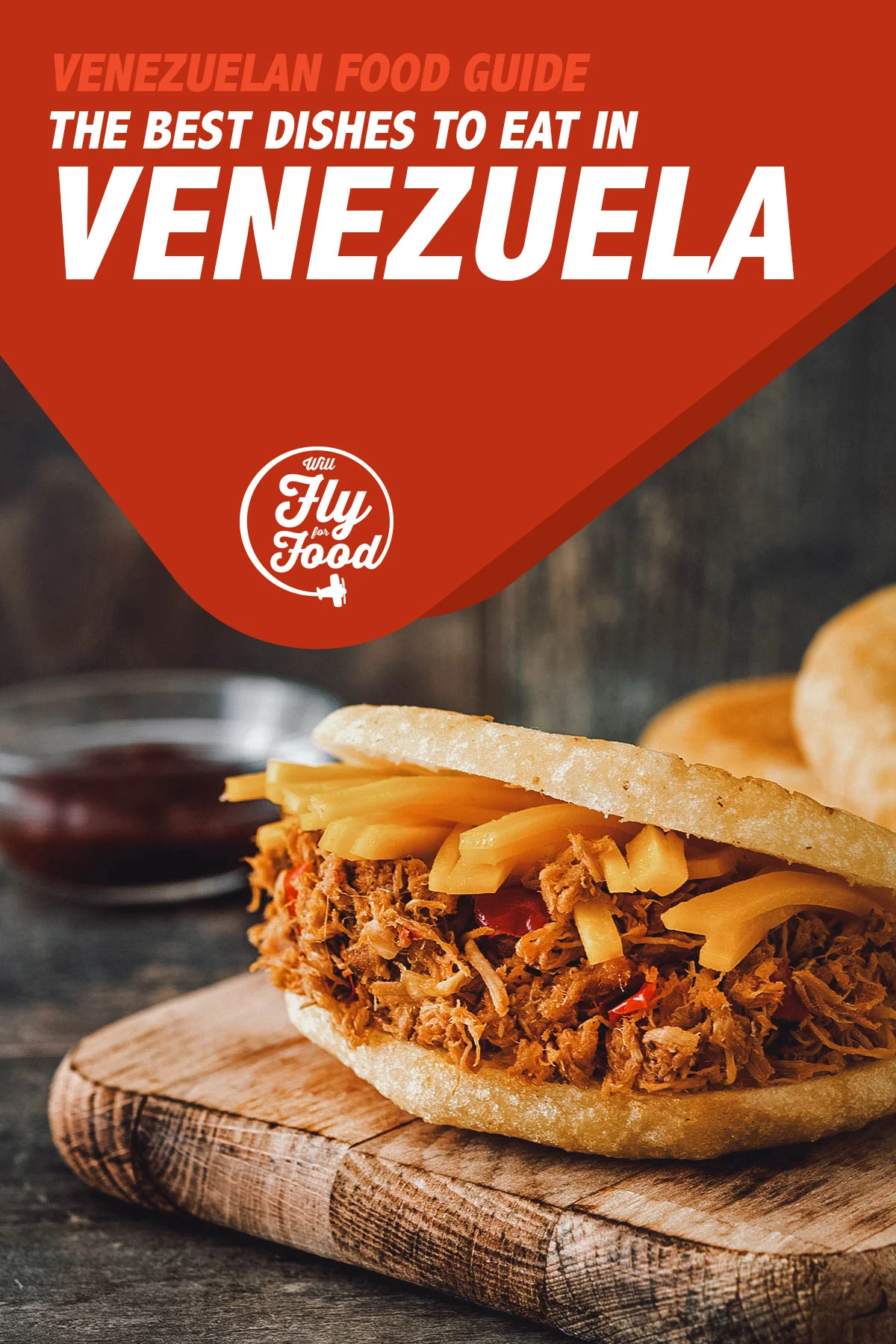
Photo by etorres69
WHAT IS VENEZUELAN FOOD?
In a nutshell, Venezuelan food is vibrant and diverse. With all the European influences from Spain, Portugal, Italy, and France, combined with West African and Native American traditions, there is no doubt that foodies are going to be in for a magical palatal adventure.
Venezuelan food staples are focused on corn, rice, plantains, beans, and yams with an assortment of several meats. Traditionally, the most ubiquitous is corn or pancakes and bread made of flour, which are served with almost anything.
Venezuelan cuisine is also described as having a large selection of queso blanco, or white cheese, with names depending on the region it’s made.
THE BEST VENEZUELAN FOOD
When it’s safe to visit Venezuela again, a well-planned Traveleater should come with a list of the tastiest and most interesting Venezuelan foods. Here’s a handy guide to some of the best dishes Venezuelan cuisine has to offer.
1. Arepa
There’s no better way to start this list than with arepa, one of the most iconic Venezuelan foods. It’s the country’s version of naan or pita bread that’s made with corn flour and filled with a wide variety of ingredients such as eggs, cheese, and pork. The fillings vary per region, the cook’s creativity, or perhaps what’s leftover in the fridge.
While arepas could also be found in the cuisines of Colombia and other neighboring countries, the Venezuelan version is typically smaller and thicker. Authentic arepas venezolanas use three main ingredients – corn flour, water, and a pinch of salt. They are cooked in a pan or griddle called a budare, and may be finished in a standard oven. Frying them is also common.
A popular arepa recipe is one that’s filled with chicken and mayo salad and avocado called the Reina Pepiada, named as a tribute to a Venezuelan Miss World, who won the crown in 1955. Other favorites are asado negro (dark beef roast), pernil de cochino (pork leg roast), and carne mechada (shredded beef).
RECIPE: Venezuelan arepas
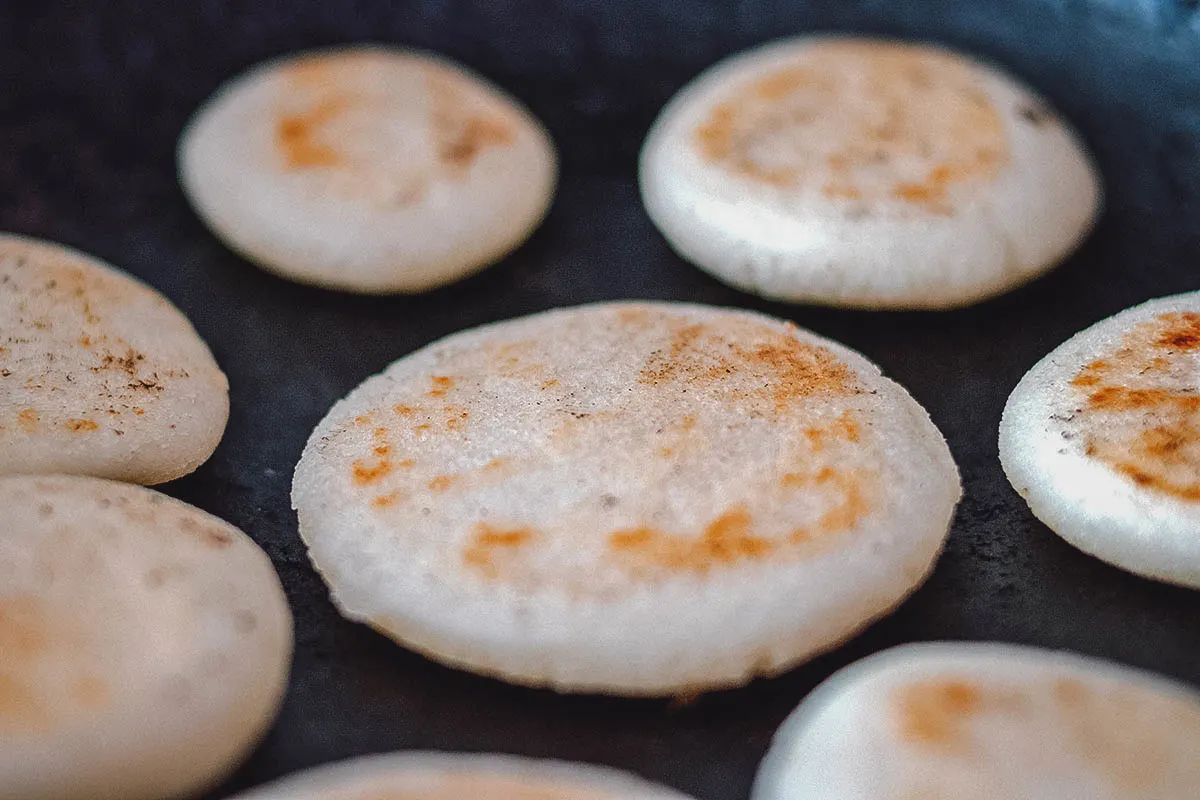
Photo by eagg13
The biggest difference between Venezuelan and Colombian arepa is in how it’s served. Colombian arepas are typically served plain with some salt and butter or stuffed with cheese.
Plain arepas are also served in Venezuela, usually with lunch or dinner, but they’re often stuffed with different fillings like shredded beef, chicken, cheese, black beans, and plantains, much like you see below.
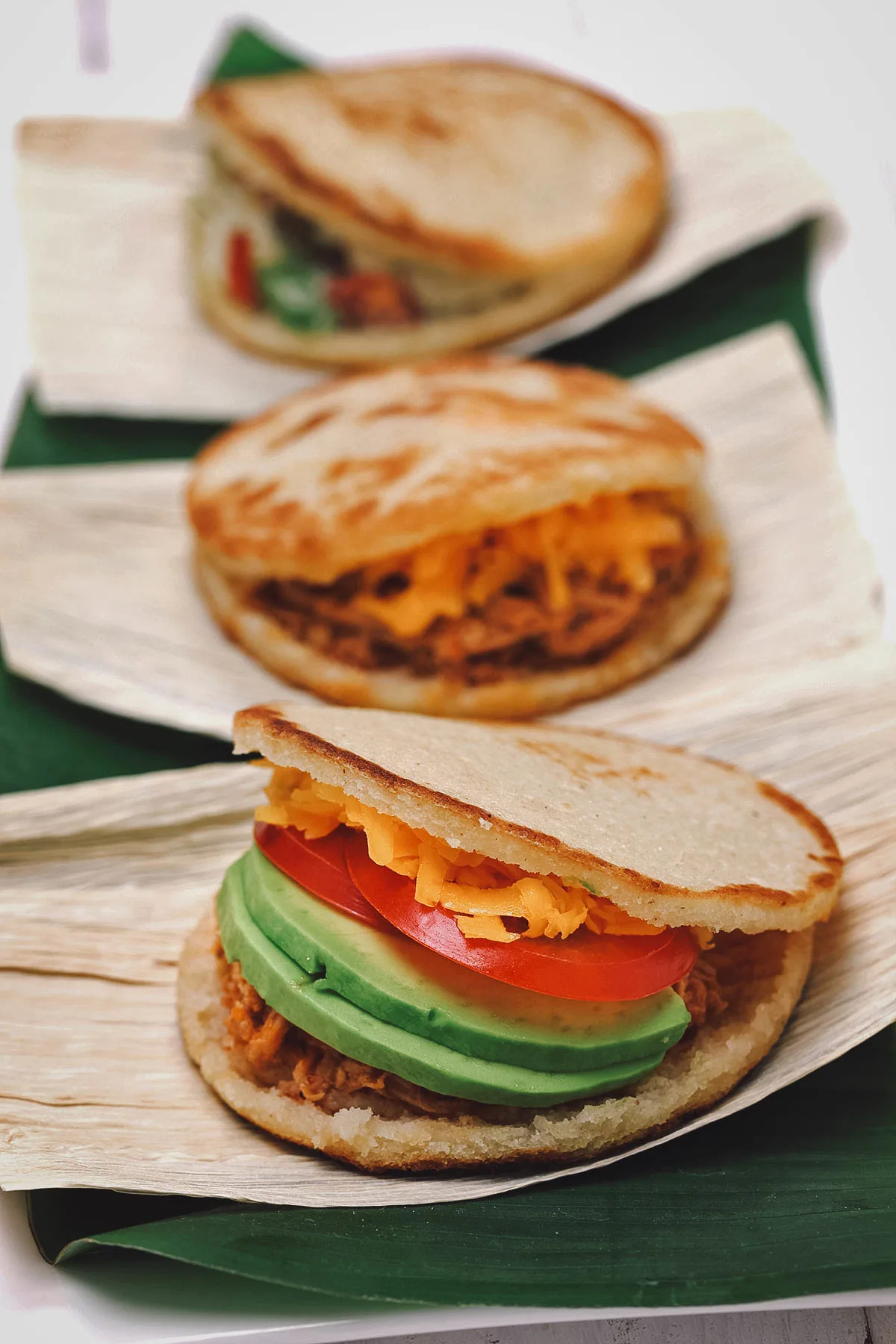
Photo by asimojet
2. Tequeños
When feeling snacky in Venezuela, a popular go-to dish is tequeños. These are cheesy breadsticks made by frying pieces of savory queso blanco wrapped in elastic puff pastry. The dough gets deliciously flaky and crispy after frying, making tequeños an irresistible snack, bar chow, or party appetizer.
This dish is already delicious by itself but could be elevated by a dipping sauce such as Venezuelan guacamole. Thought to have originated in the vacation town of Los Teques, the popularity of tequeños has spread to other countries, giving birth to variations that use wraps such as wonton and empanada dough, and fillings of sliced ham, fruits, and vegetables.
RECIPE: Tequeños
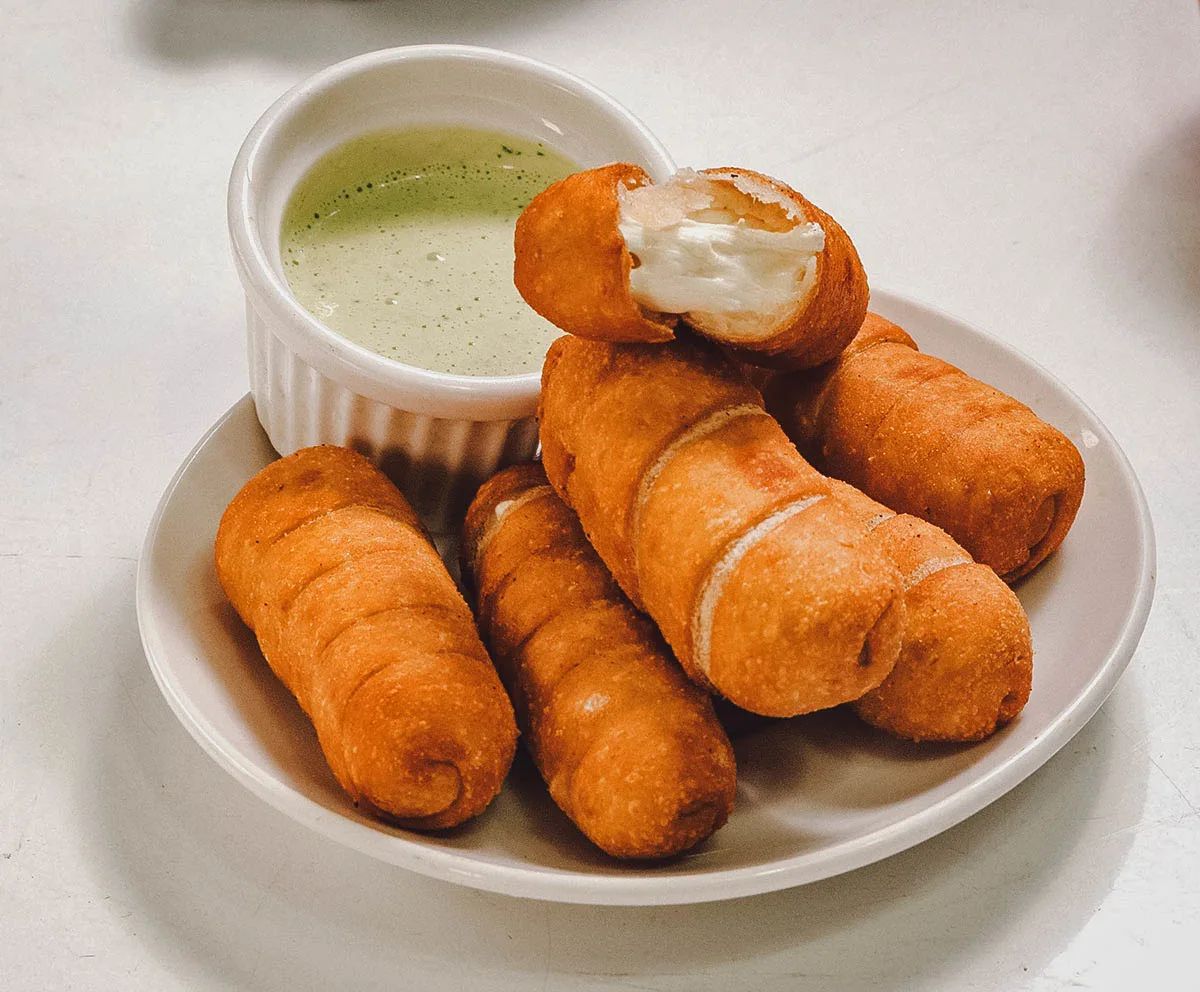
Photo by janethw
3. Tostones (or Patacones)
Plantains are a staple in Latin America, making tostones a part of a Venezuelan’s everyday diet. Believed to have come from their African ancestors, people serve tostones as appetizers or side dishes to complement mains.
Unripe plantains are the star of the dish and are prepared by frying them twice to reach the desired texture that’s unique to tostones. After the first round of frying, the plantain slices are removed from the pan and patted down to remove the excess oil. They are then pounded flat before being fried to golden perfection.
RECIPE: Venezuelan tostones
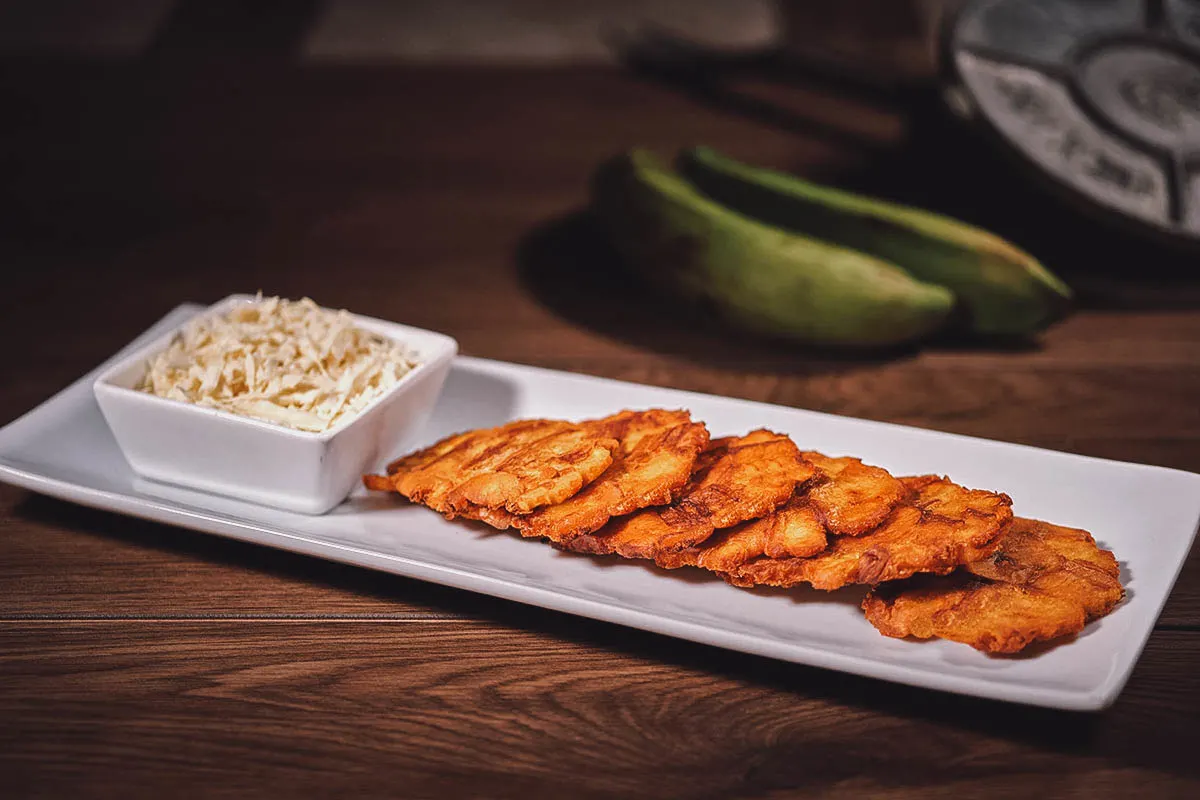
Photo by marketingfotografico
Aside from being served on their own as an appetizer or snack, patacones can also be used instead of bread to make fried plantain sandwiches called patacon maracucho. Made with different fillings like shredded roast chicken, tomato, lettuce, cilantro, avocado, and cheese, the sandwich is originally from Maracaibo City in Venezuela but it’s now well-known and served throughout Latin America.
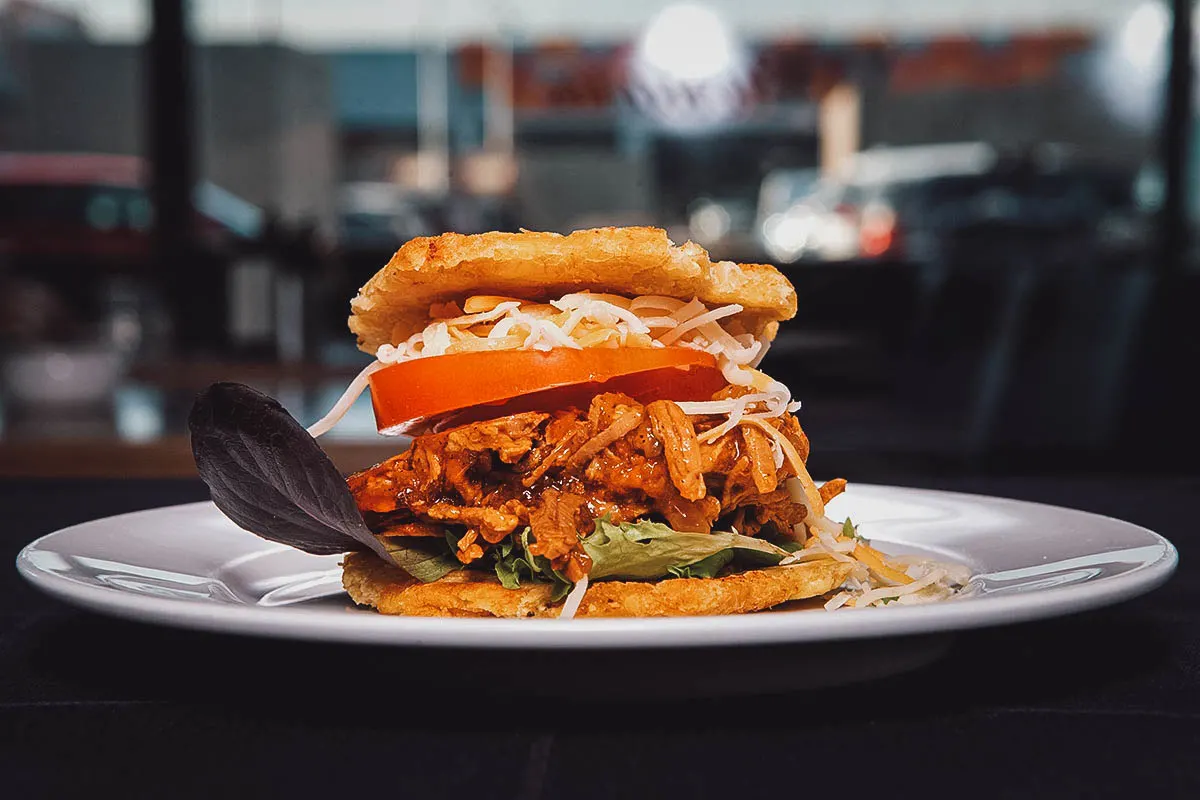
Photo by demidoff
4. Empanada
Spain has really left an indelible mark not only in its colonies’ culture but also in their food. This makes the empanada one of the most popular imports from the Spanish colonizers. While its origin is largely unknown, it’s believed to have come from Galicia, in Spain’s northwestern region.
An empanada is a type of fried or baked pastry with a filling composed of meat, cheese, vegetables, or other ingredients. The word itself means “wrapped in bread,” and what’s inside varies in the country where it’s from.
The traditional Venezuelan empanada is made with ground corn dough with a yellow color when toasted due to the addition of annatto. They can be made with wheat flour as well. Cheese is often stuffed inside, but fillings are diverse. They could be a cheese-and-black-bean combo called a domino or a full-on meal inside with a pabellon – having all the same elements of the country’s national dish.
RECIPE: Venezuelan chicken empanadas
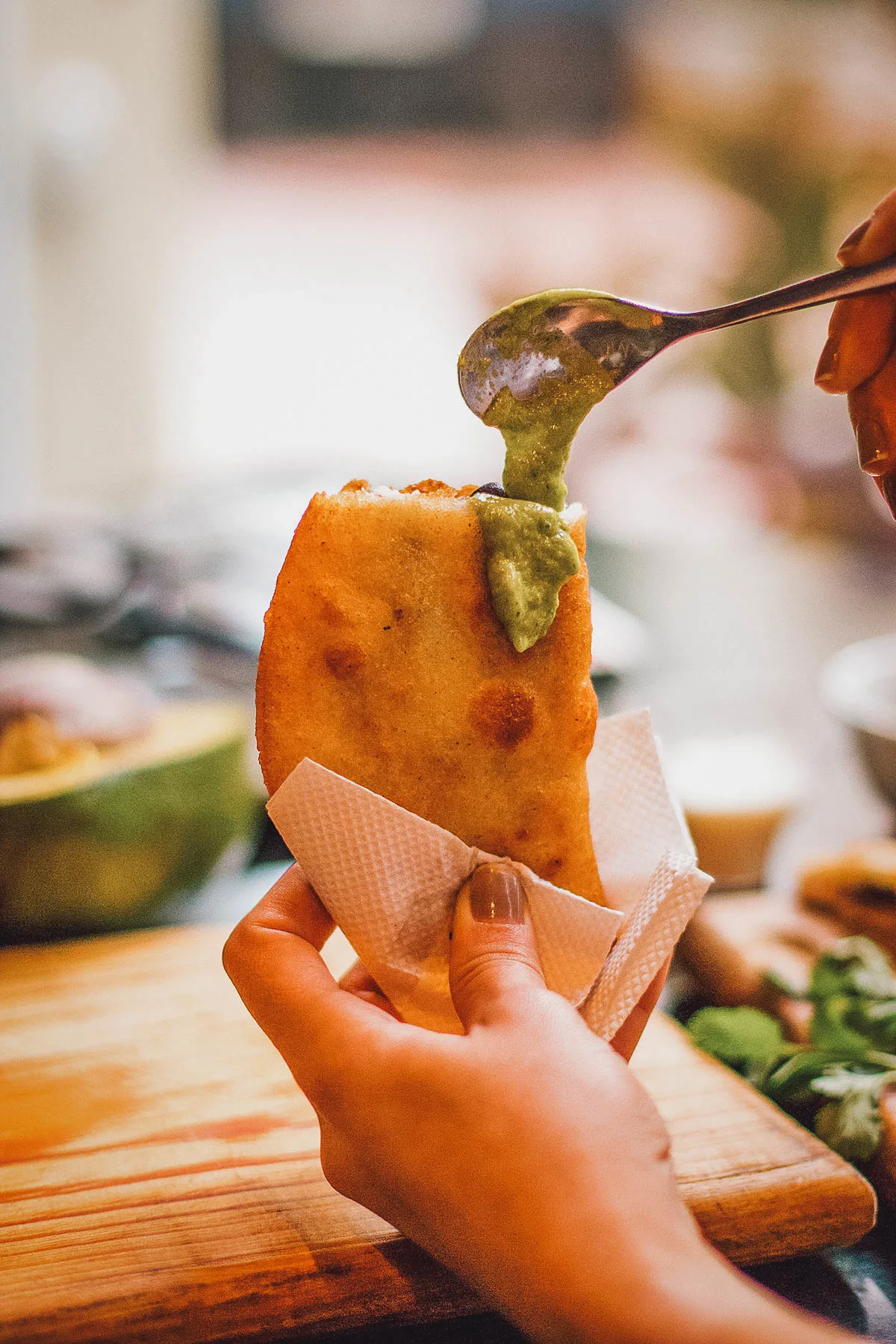
Photo by alejandrocoutinho
5. Cachito
Cachito is a popular Venezuelan dish similar to a croissant. Ingredients vary but it’s typically made with wheat flour, eggs, butter, milk, salt, sugar, yeast, and water. It’s a staple dish in Venezuelan cuisine and often filled with ham and cheese.
It’s unclear where cachitos originated from but some believe it may have been derived from the Venezuelan Christmas dish pan de jamon. Another theory claims that it may have been introduced to Venezuela by Portuguese and Italian bakers in the early 20th century.
In fact, there’s a huge Portuguese influence in all of Venezuela’s baking. Pretty much all the panaderias or bakeries in Venezuela are owned by people of Portuguese descent.
RECIPE: Cachitos de jamon
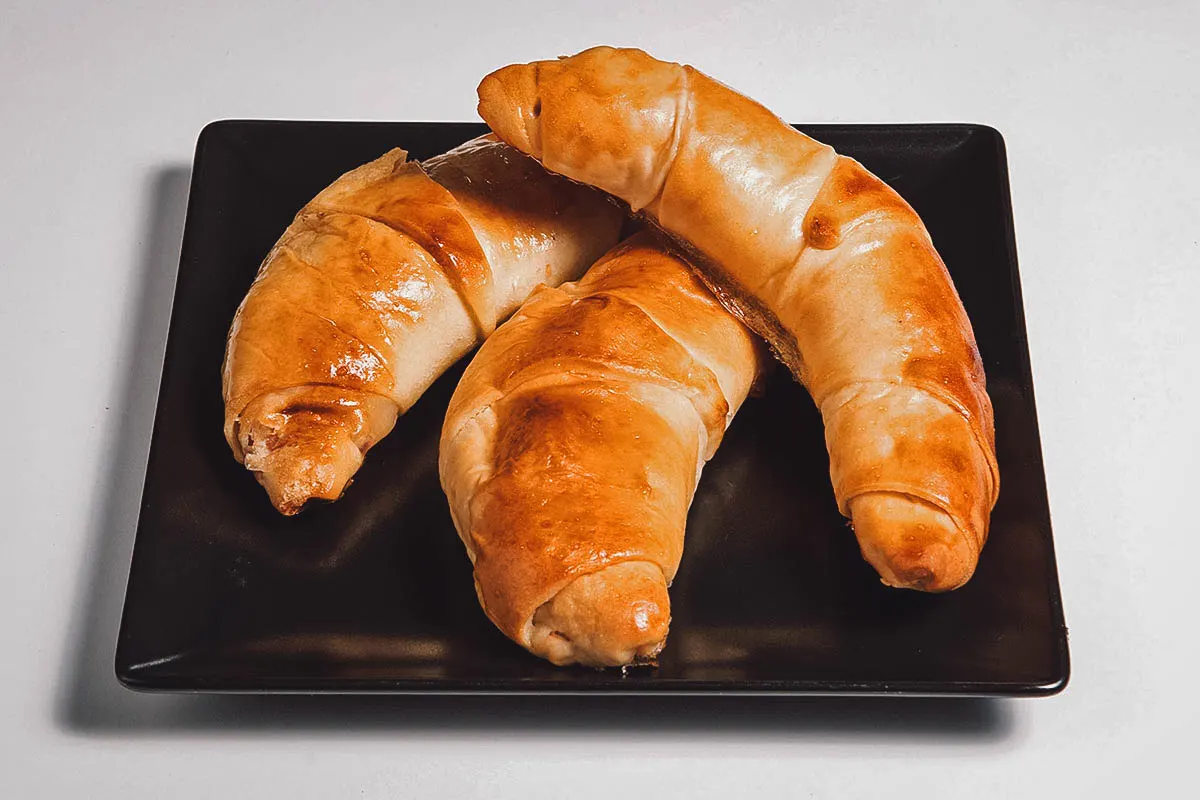
Photo by demidoff
6. Cachapa
Cachapa is a traditional Venezuelan dish that came from the county’s north-central region where its indigenous people cultivated corn and considered the crop as of divine origin. It’s a thin pancake made with fresh ground corn, queso blanco, and panela or sugar, and cooked in a budare. Enjoyed as an appetizer or a full breakfast, it’s usually folded in half and filled with queso de mano and served with a side of chicharron.
The dish is similar to an arepa in that they both are like pancakes. However, a cachapa is thicker with a more irregular texture due to the added corn. It’s also served savory that’s crispy on the outside and fluffy inside, delivering a delicious culinary experience with each bite.
RECIPE: Cachapas
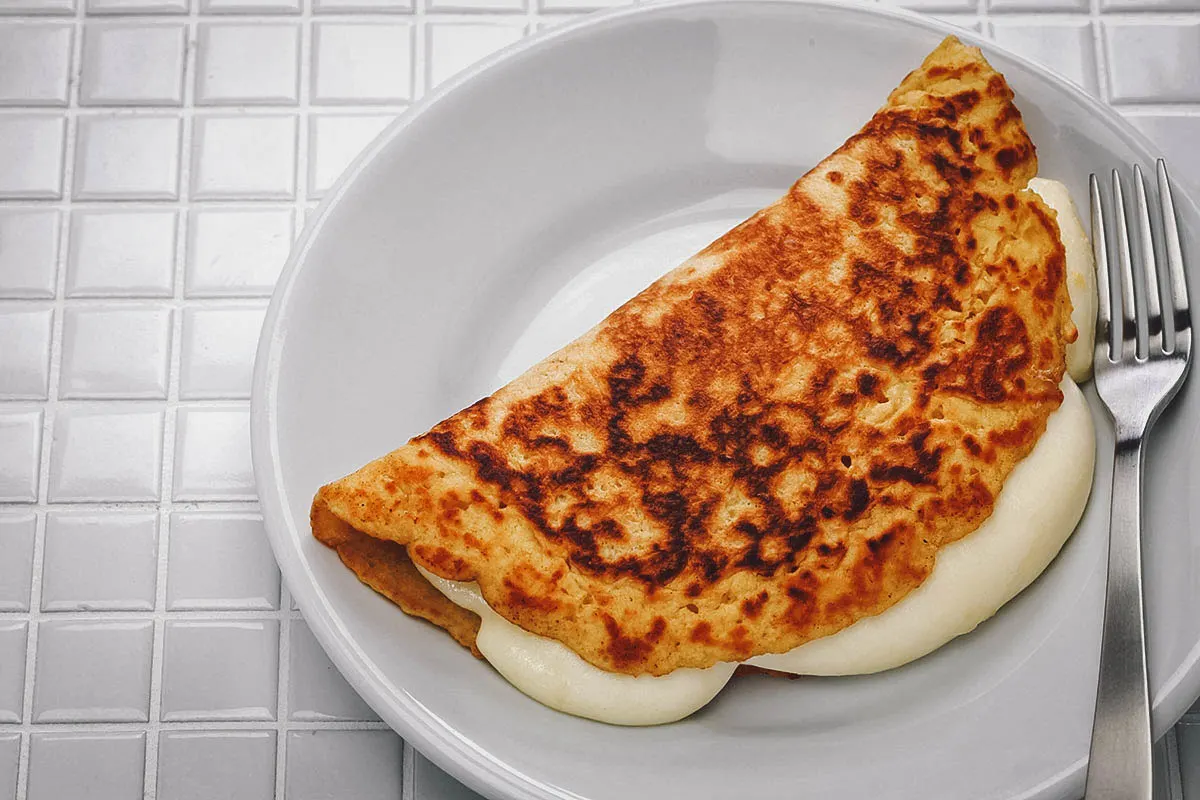
Photo by asimojet
7. Pan de Jamon
Pan de jamon is a popular Christmas food in Venezuela. It’s a slightly sweet bread roll that’s stuffed with ham, olives, and raisins. Thought to have originated in a Caracas bakery in 1905, when the owner was looking for a way to make good use of leftover ham. After rolling them in a soft and fluffy dough and baking it, the result was a savory bread roll that has since graced the table during the holidays.
Through the years, locals made their own iterations of the bread, giving birth to the most popular version that contains ham, olives, and raisins. It’s now a sweet and savory blend that’s surprisingly delicious, making it a perfect Christmas Venezuelan dish.
RECIPE: Pan de jamon
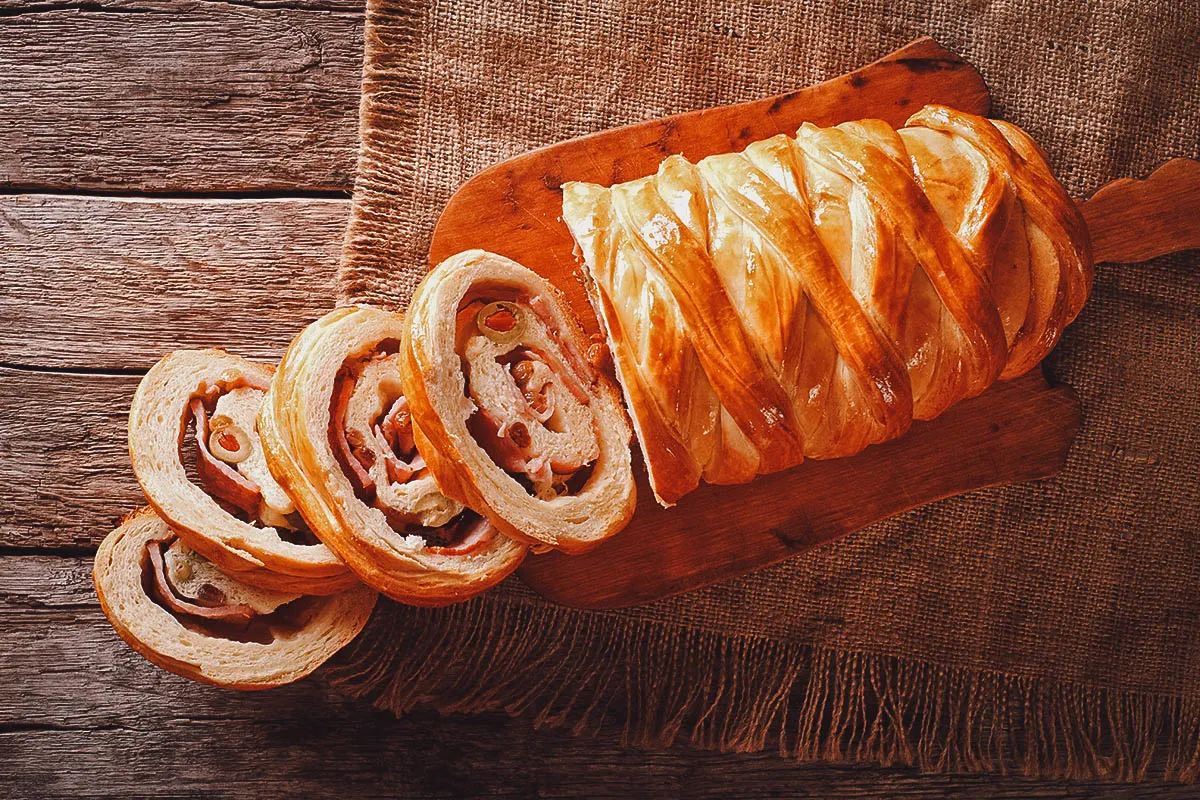
Photo by lenyvavsha
8. Hallacas
During the holiday season, when people feast on lechon or expensive cuts of meat, Venezuelans serve hallacas. Often described as the country’s version of tamales, hallacas are one of the oldest Venezuelan food traditions.
Nothing much has changed in the preparation of hallacas since colonial times, except for a few modern refinements. Like pabellon criollo, they’re considered as a symbolic dish of Venezuela’s multi-cultural heritage with its inclusion of European, indigenous, and African ingredients.
They say the dish originated during Chrismas Eve when wealthy families prepared huge banquets with a variety of meats and vegetables. The next day, slaves would collect the leftovers and wrap them in cornmeal dough with plantain leaves before cooking.
Today’s hallacas are prepared using the same process. A thin layer of cornmeal dough is stuffed with a meat filling of beef, chicken, and pork that’s mixed with several ingredients that include bell pepper, olives, and raisins. They are wrapped in plantain leaves and boiled to perfection.
Hallaca ingredients differ depending on the region. This gives credence to Venezuelans, saying, “No hallaca tastes the same as another.”
RECIPE: Hallacas
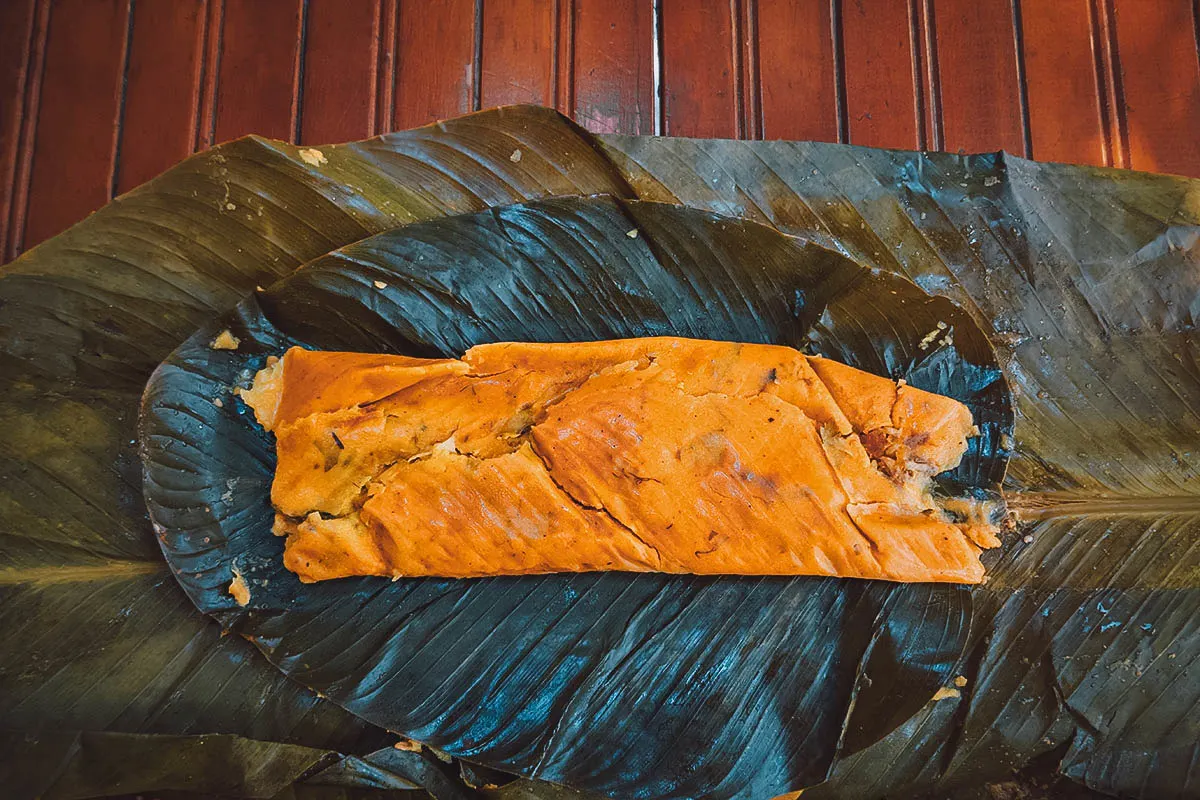
Photo by HectorPertuz
9. Pisca Andina
The Andean Mountains are the longest continental mountain range in the world, stretching across seven South American countries that include Venezuela. The freezing temperatures up in these mountains gave birth to the country’s winter special – pisca andina.
Pisca andina is a soup dish that’s made with chicken broth, potatoes, milk, and cheese with lots of cilantro. It’s typically served for breakfast to give warmth in chilly mornings up in the mountains.
RECIPE: Pisca Andina
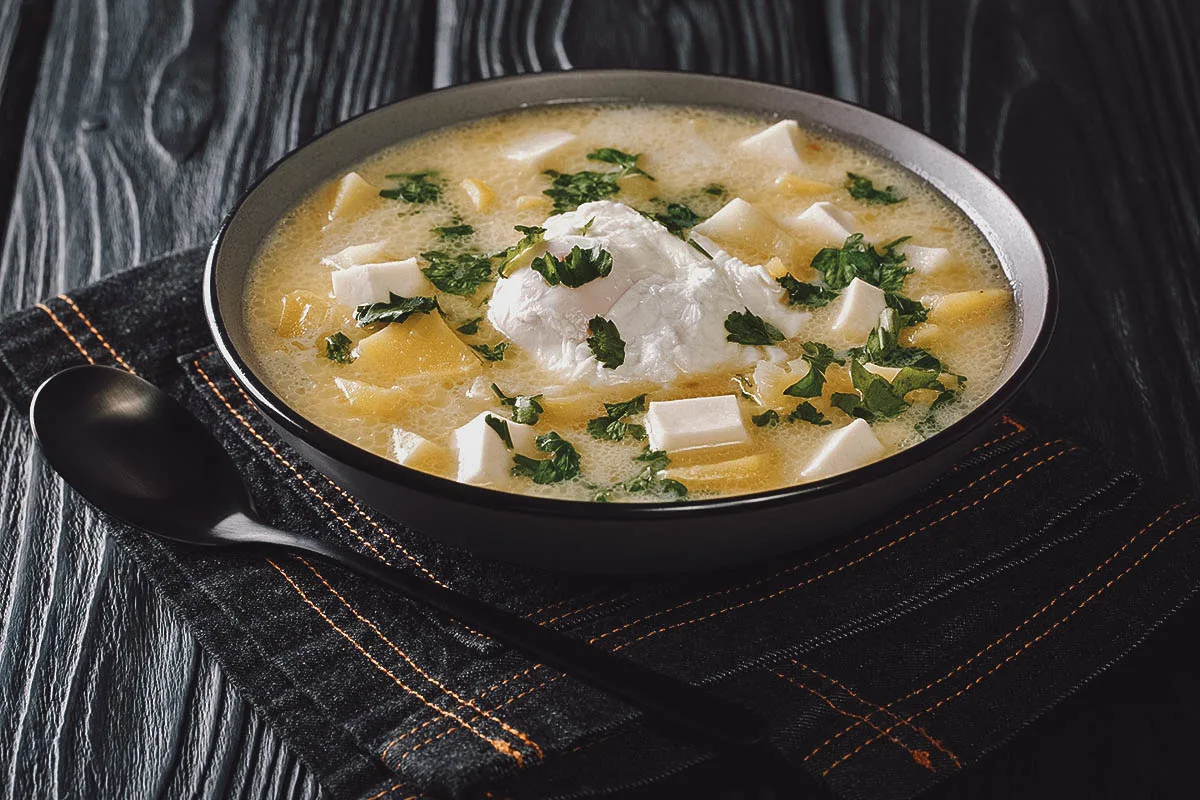
Photo by lenyvavsha
10. Perico
Perico is a South American style of scrambled eggs popular in Colombian and Venezuelan cuisine. It consists of scrambled eggs mixed with onions, scallions, tomatoes, and red bell peppers. It’s typically served for breakfast or brunch with bread or stuffed into arepas.
RECIPE: Perico
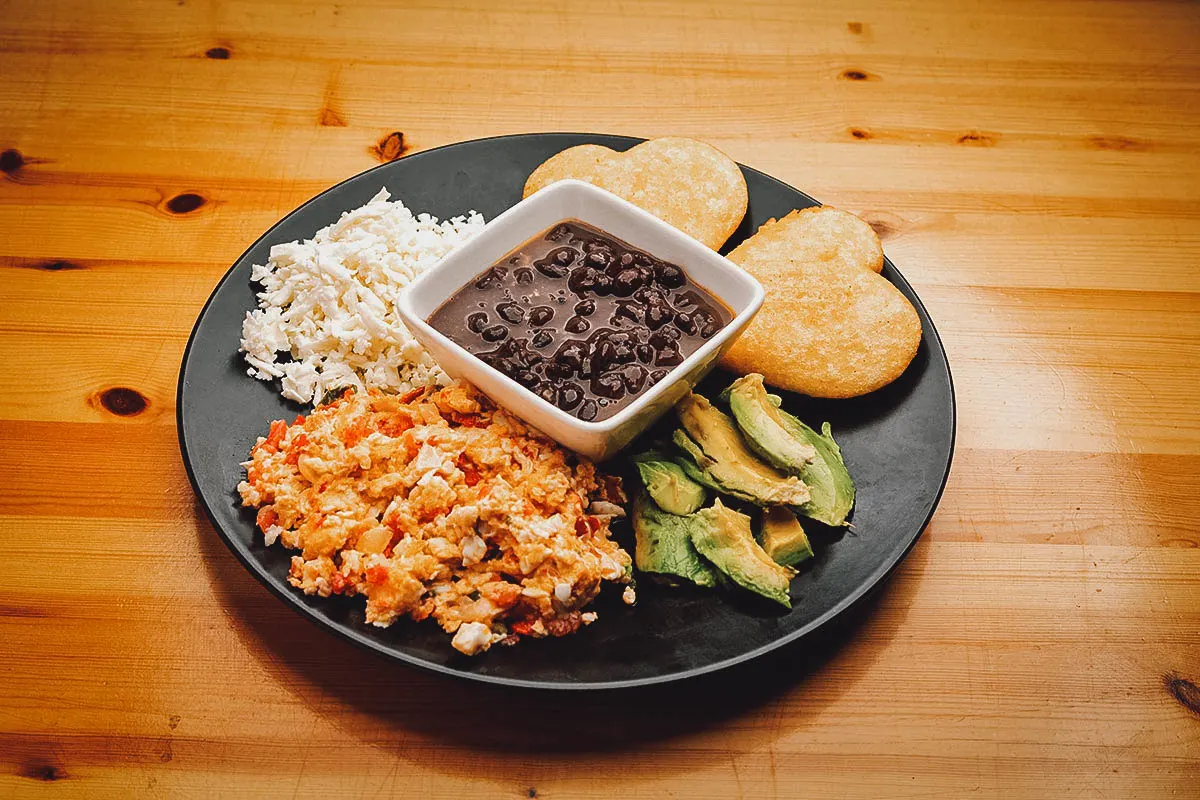
Photo by jgfotografia
11. Chicharron
Chicharron is a dish consisting of fried pork rinds or pork belly. It’s a popular dish that’s widely consumed throughout Latin America, North America, and the Philippines.
Like empanada, chicharron is a dish of Spanish origin. Before vegetable oil was mass produced, people would cook with animal fat. They’d fry pork in its own fat to extract the lard and save it for future use. The leftover pieces of fried pork would later become known as chicharron.
Chicharron can be consumed in many ways. It can be enjoyed as a snack or side dish with arepas or cachapas and is commonly sold as street food in Venezuela.
RECIPE: Venezuelan chicharron
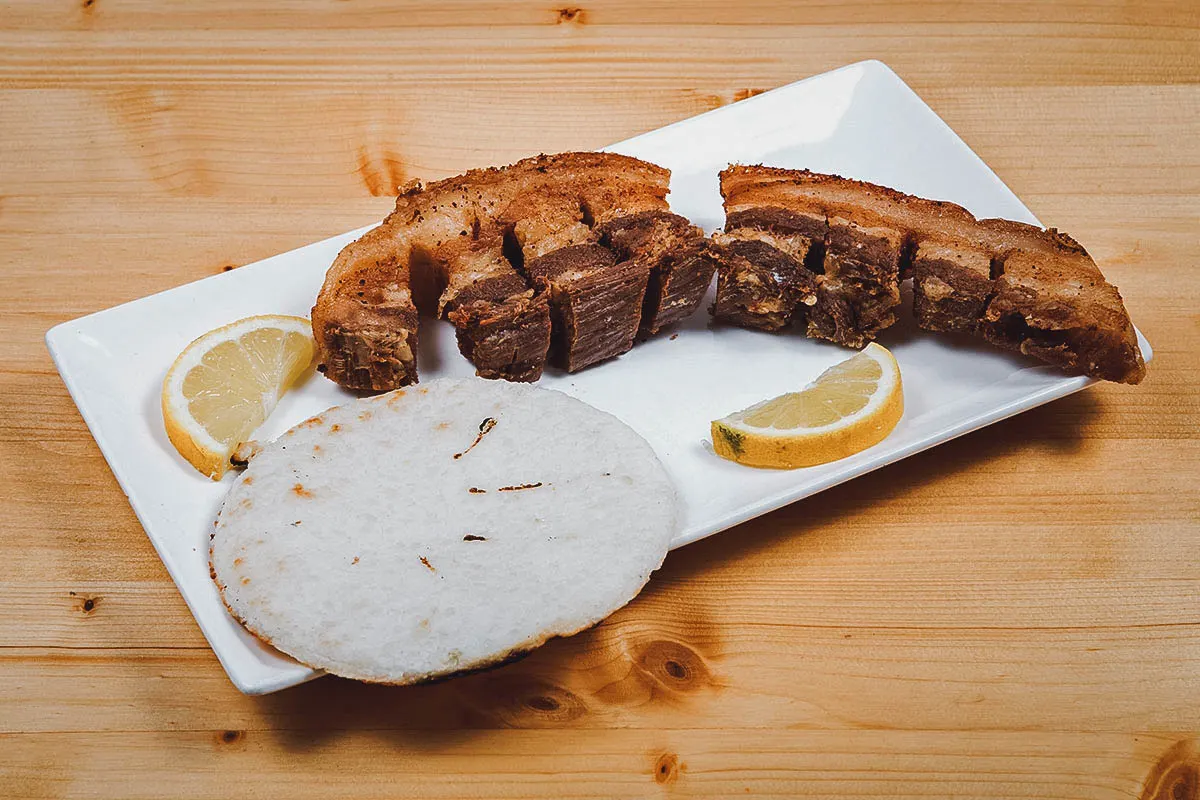
Photo by demidoff
12. Sancocho
Sancocho is a traditional soup or stew made with different types of meat and vegetables. It’s popular in Venezuela and in many Latin American countries like Colombia, Ecuador, Panama, and the Dominican Republic.
In Venezuela, sancocho is enjoyed throughout the country, often as a weekend meal. It can be made with one or more animal proteins like beef, chicken, goat, tripe, fish, or seafood. When mixing two or more types of meat together in one sancocho, it’s referred to as cruzado or “crossover.” Common vegetables and seasonings used include garlic, onions, potatoes, cassava, yams, taro, pumpkin, oregano, and cilantro.
Sancocho can be served with arepas or casabe (cassava bread). It’s a common dish at celebrations and regarded by some as a hangover cure. It’s for this reason why it’s often served for lunch on Christmas and New Year’s Day.
RECIPE: Venezuelan sancocho
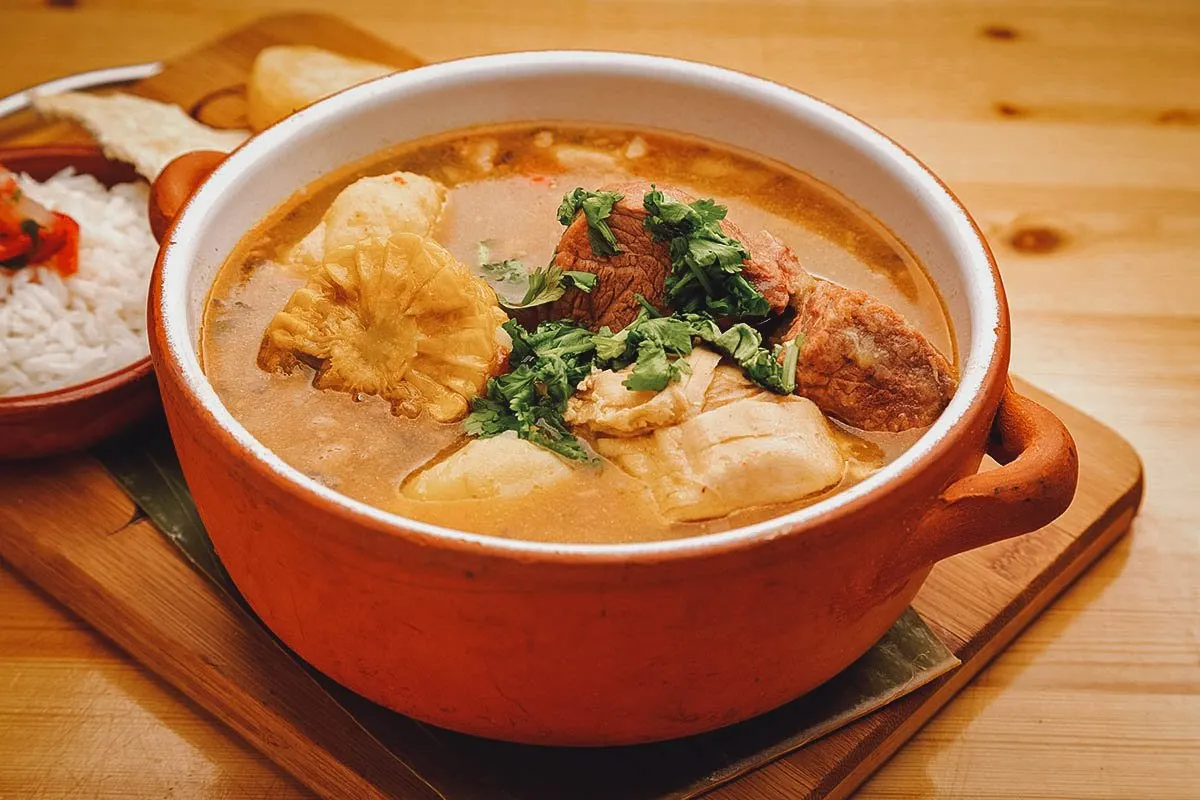
Photo by jgfotografia
13. Pabellon Criollo
Pabellon criollo is recognized as the national dish of Venezuela. This traditional Venezuelan dish is made with juicy shredded beef, black beans, and rice, with tajadas (fried plantains) or a fried egg – or both – as common sides. It’s basically the Venezuelan version of the Cuban ropa vieja.
There isn’t much known about its origin, but there is some speculation based on vague historical evidence on how it became Venezuela’s national dish. During the Spanish occupation, it was known that the foreign colonizers treated indigenous and African slaves harshly, often depriving them of food for days on end.
If they ever got lucky and had food, it was nothing but measly leftovers. Over time, this became the symbol of their struggle. And even after the end of Spanish oppression, the leftover concept eventually gave birth to the dish, naming it pabellon, or “flag.”
It is said that each ingredient represents each ethnic group: the brown meat and yellow plantains as the indigenous people, the white rice as the European settlers, and the black beans as the Africans. Many believe that the colors embody the country’s flag, making pabellon criollo a truly nationalistic Venezuelan dish.
RECIPE: Pabellon criollo
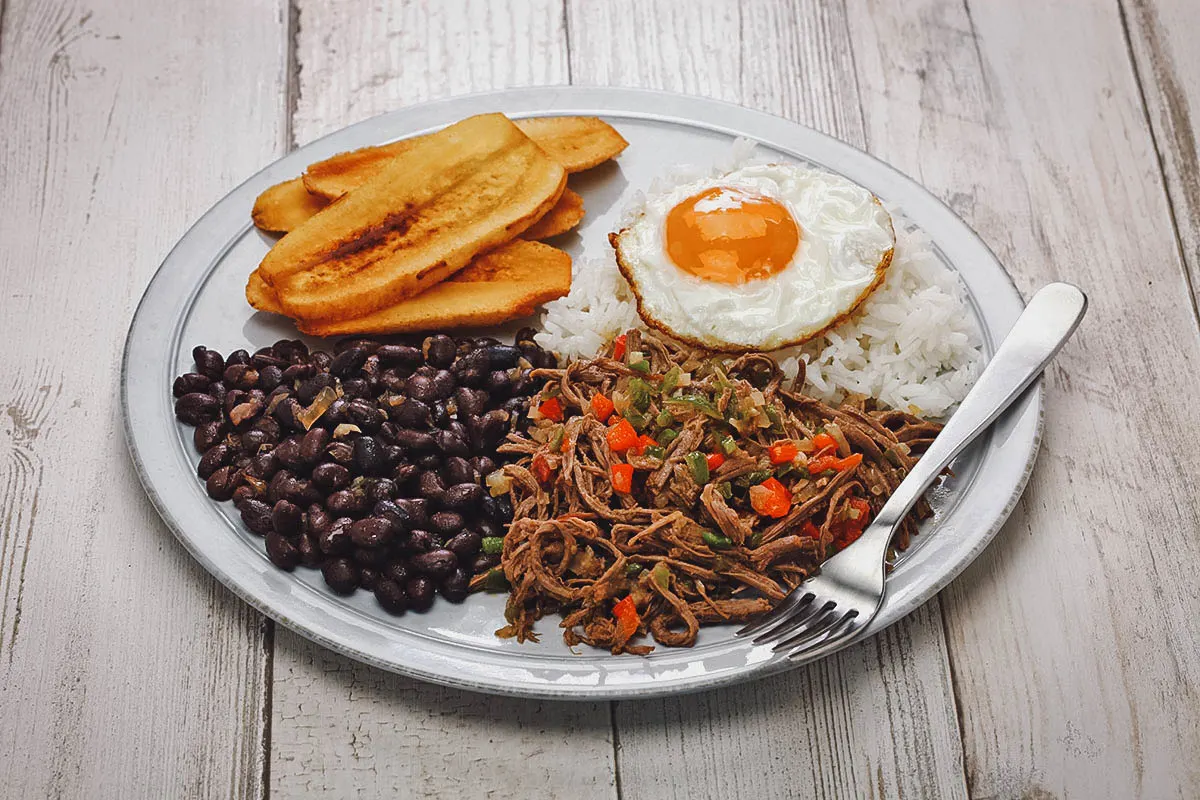
Photo by asimojet
14. Catalinas
Catalinas are soft Venezuelan cookies. Also known as catalinas criollas or paledonias, they’re a Creole delicacy made with flour, papelón (unrefined whole cane sugar), syrup, and cinnamon.
Best with coffee, hot chocolate, or milk, the most famous catalinas are said to be from Zulia and Lara states though they’re widely available throughout Venezuela.
RECIPE: Catalinas
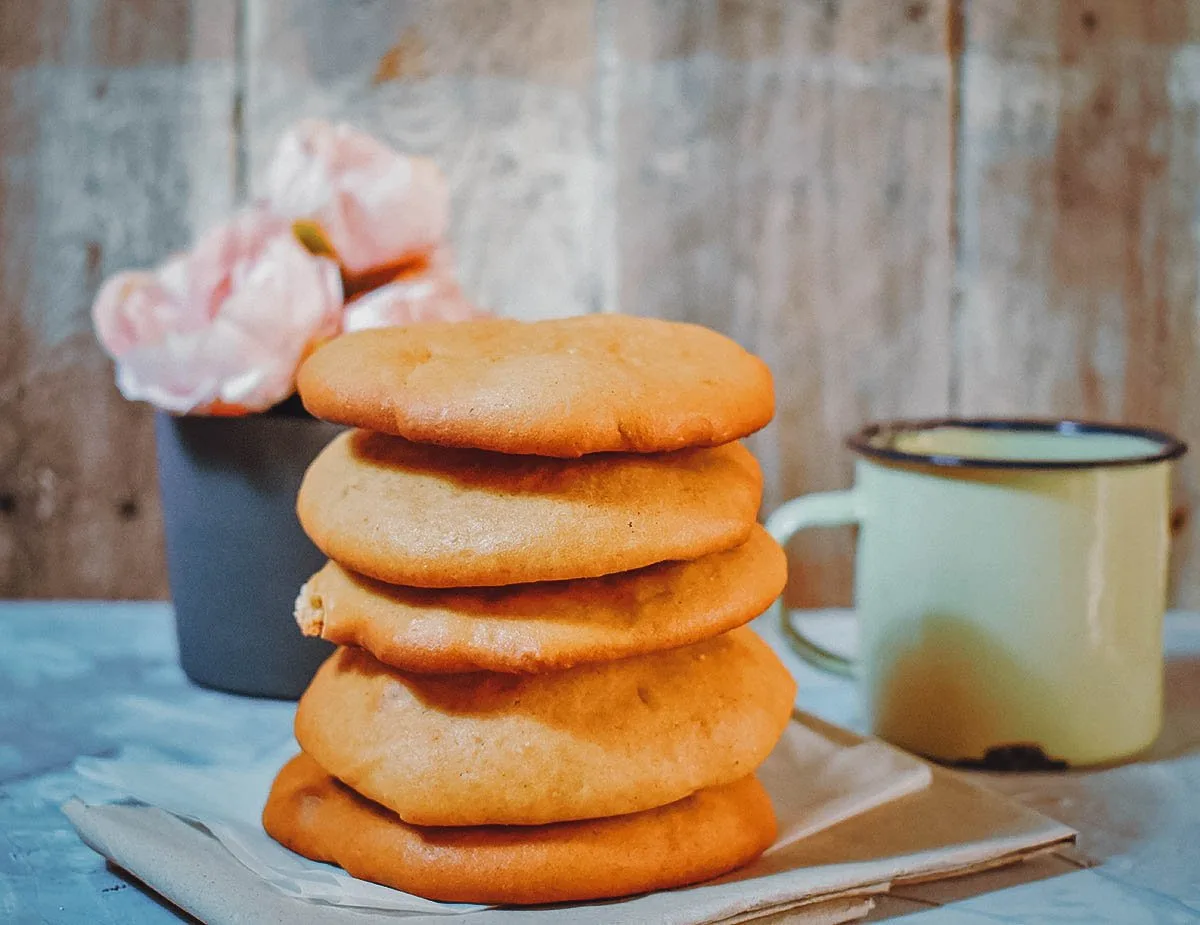
Photo by anelerodie85.gmail.com
15. Chicha
Chicha is a popular drink in Latin America. Each country has its own version of it, using different ingredients. Chicha Venezolana is easily the favorite national drink that can be found all over Venezuela. It’s a thick drink that’s made with rice and milk that’s refreshing and comforting at the same time.
The key to a perfect glass of chicha is soaking the rice for at least two hours or even overnight. After soaking, the rice is rinsed then cooked in fresh water to soften the grains until it turns soggy. Blend the rice with condensed milk for that sweet kick. Nutmeg and a cinnamon stick can be added for that extra flavor.
RECIPE: Venezuelan chicha
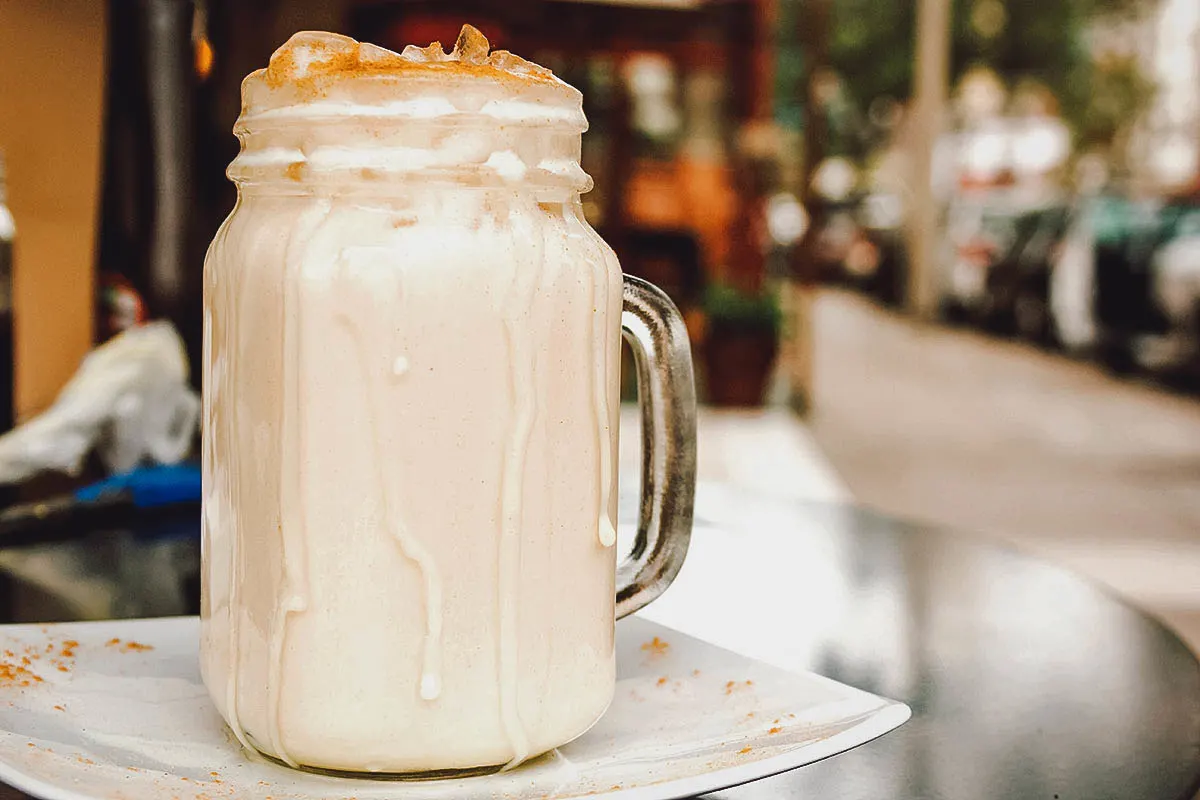
Photo by rjankovsky
FINAL THOUGHTS
Venezuela has a rich and diverse culture that’s reflected in the country’s cuisine. The ingredients tell stories that are part of Venezuela’s colorful history.
The fifteen dishes on this Venezuelan food guide are just a tiny peek into the exciting food offerings in the country. Judging from where these Venezuelan dishes come from and how they’re prepared, any foodie looking for a gastronomic adventure is in for a treat.
Oh, and one final tip, if you’re enjoying the food in Venezuela so much and want to express your appreciation, just say “La estoy pasando chevere”. Venezuelans will know what you mean.
Disclaimer
This article is meant to highlight Venezuelan cuisine and offers suggestions on which foods to try once travel to Venezuela becomes safe again. It is NOT meant to encourage trips to Venezuela right now. If you do decide to visit, then you do so at your own risk. Be sure to check the latest travel advisory before planning a trip to Venezuela.
Cover photo by alexandrelaprise. Stock images via Depositphotos.


Mr Beast
Tuesday 28th of November 2023
All of these food are great
Jorge Capiello
Wednesday 18th of January 2023
If you take the minimal precautions visiting Venezuela is not much more dangerous than visiting many other countries worldwide. Nowadays situation regarding personal safety has improved a lot.
Morela
Thursday 8th of September 2022
Muchísimas gracias por este buen artículo. Mos venezolanos nos sentimos muy orgullosos de nuestra cultura y tradiciones, lamentablemente muchos tomamos la decisión de emigrar trayéndonos todo ese bagaje en las espaldas. Pero todos tenemos familias enteras que se han quedado en nuestra patria y viven lo mas dignamente posible. Los se encargan de mantener vivo el pais en forma muy honrada y con mucha pSión.
JB & Renée
Wednesday 14th of September 2022
It was our pleasure Morela! Happy you appreciated it.
Morela
Thursday 8th of September 2022
These are the most popular dishes of Venezuelan cuisine, but we have other more special dishes for good dinner or lunch opportunities, they would be the black roast "asado negro", . the chicken powder cake "pastel de polvorosa de pollo" the Chucho cake "pastel de chucho" the meat on a stick "carne en vara" and so many more.
JB & Renée
Wednesday 14th of September 2022
Thank you for sharing Morela!
El Americano
Wednesday 24th of August 2022
I'm an American married to a wonderful Venezuelan lady and I can vouch that the food is fantastic. Yummy Yummy.
JB & Renée
Friday 26th of August 2022
¡Muchas gracias El Americano!